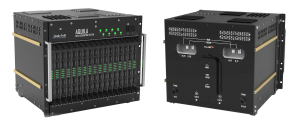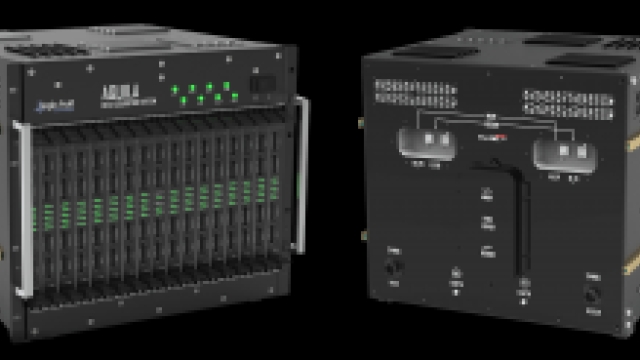Unlocking Insights: Mastering the Art of Data Acquisition Systems

In today’s data-driven world, understanding and utilizing data acquisition systems is essential for businesses and researchers alike. These systems play a crucial role in gathering, measuring, and analyzing data from various sources to derive meaningful insights. Whether it is monitoring environmental conditions, tracking industrial processes, or facilitating scientific research, data acquisition systems serve as the backbone of informed decision-making.
As the volume and complexity of data continue to grow, mastering the art of data acquisition becomes increasingly important. This involves not only selecting the right tools and technologies but also developing the skills to effectively interpret the data collected. By doing so, organizations can unlock a wealth of information that drives innovation, enhances efficiency, and ultimately leads to a competitive advantage. Understanding the nuances of data acquisition systems can thus empower individuals and teams to make actionable insights from raw data, laying the groundwork for success in various fields.
Fundamentals of Data Acquisition Systems
Data Acquisition Systems, often referred to as DAS, are crucial for collecting and analyzing data from various sources. These systems are designed to monitor and record signals from different sensors, transducers, or instruments, converting them into a usable format for further analysis. A typical data acquisition system consists of several components including sensors, signal conditioning elements, data acquisition hardware, and software to process the collected data. Understanding the underlying principles of these components is essential for effectively implementing a data acquisition system in any application.
The first step in building an effective data acquisition system is selecting the right sensors that can accurately measure the desired parameters, such as temperature, pressure, or voltage. Once the sensors are in place, the signals they produce often require conditioning to enhance accuracy and reliability. Signal conditioning may involve amplification, filtering, or converting signals to the right format before they are sent to the data acquisition hardware. This stage is critical as it ensures that the system captures high-quality data that reflects true measurements from the environment being monitored.
Finally, the data acquisition hardware plays a pivotal role in collecting, storing, and transmitting the data to processing software. This hardware can range from simple, standalone modules to complex, multi-channel systems that can handle large volumes of data in real-time. With advancements in technology, modern data acquisition systems often include built-in connectivity features, allowing seamless integration with other systems and enabling remote monitoring and control. Understanding these fundamentals is key to mastering the art of data acquisition systems and unlocking valuable insights from the data collected.
Key Components and Technologies
A Data Acquisition System consists of several critical components that work together to collect, measure, and analyze data from various sources. The core elements include sensors, signal conditioning units, data acquisition hardware, and software for analysis. Sensors convert physical phenomena such as temperature, pressure, or flow into electrical signals, allowing for accurate measurement of real-world conditions. Each sensor type is chosen based on the specific measurement needs and environmental conditions, ensuring accurate data capture.
Signal conditioning plays a vital role in preparing the raw data for processing. This involves amplifying, filtering, and converting signals into a suitable format for further analysis. Effective signal conditioning enhances signal quality and minimizes noise, which is crucial for achieving reliable data results. The selection of signal conditioning technologies often depends on the specific requirements of the application, including the type of signals being measured and the desired data fidelity.
The data acquisition hardware encompasses the circuitry, modules, and interfaces that facilitate the transfer of data to a computer for processing. This hardware can include analog-to-digital converters, multiplexers, and communication interfaces. On the software side, various applications are available for data visualization and analysis, enabling users to interpret the data collected by the system effectively. The integration of hardware and software ensures that data can be monitored, recorded, and analyzed in real time, making it an indispensable part of modern data-driven decision-making.
Best Practices for Implementation
When implementing a Data Acquisition System, it is crucial to start with a clear understanding of your project requirements and objectives. This involves identifying the specific data types you need to collect, the sensors required, and the intended use of the data. Creating a detailed plan can help mitigate risks and streamline the implementation process. Involving stakeholders early in the planning phase ensures that all necessary perspectives and expertise are considered, leading to a more robust system design.
Another important practice is to ensure that the Data Acquisition System is scalable. As your needs grow or change, your system should be able to accommodate new sensors, increased data volume, or additional analysis capabilities. Choosing modular components and technologies that can easily adapt to future requirements will save you time and resources in the long run. Testing the system with various data inputs during the development phase can also highlight potential issues and allow for adjustments before full deployment.
Lastly, maintain a focus on data integrity and security throughout the implementation of your Data Acquisition System. Employing best practices such as error checking, validation, and secure data storage will protect against data loss and corruption. Regular updates and maintenance checks are essential in ensuring that your system operates efficiently and continues to remain secure against emerging threats. Educating your team on data handling protocols and security measures will promote a culture of responsibility and awareness, further strengthening the system’s reliability.
